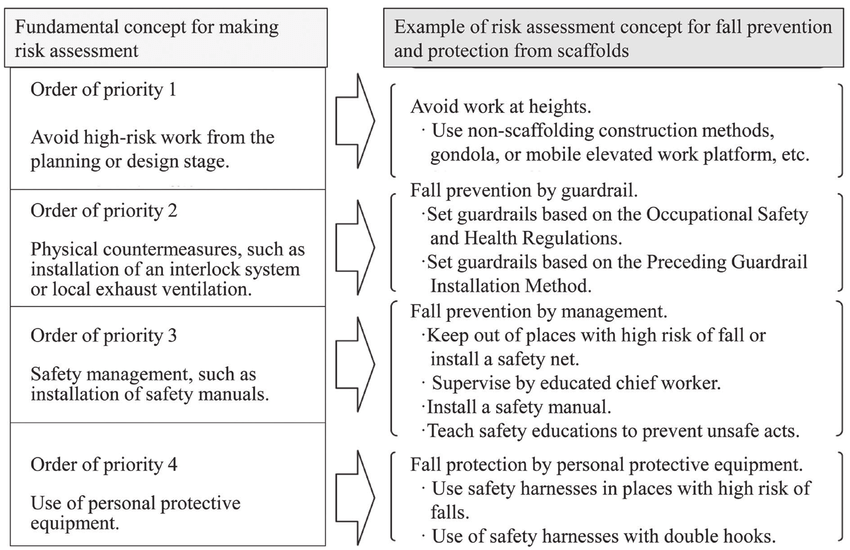Get This Report on Dementia Fall Risk
Table of ContentsDementia Fall Risk - QuestionsThe Dementia Fall Risk StatementsDementia Fall Risk Can Be Fun For AnyoneHow Dementia Fall Risk can Save You Time, Stress, and Money.
An autumn risk evaluation checks to see just how likely it is that you will fall. It is mainly provided for older grownups. The evaluation generally consists of: This consists of a collection of questions regarding your total wellness and if you have actually had previous falls or issues with equilibrium, standing, and/or walking. These devices check your stamina, balance, and stride (the means you stroll).STEADI consists of screening, examining, and intervention. Interventions are suggestions that might minimize your danger of falling. STEADI includes 3 steps: you for your risk of dropping for your danger elements that can be enhanced to try to prevent falls (for instance, equilibrium problems, damaged vision) to minimize your threat of falling by using effective strategies (as an example, giving education and learning and resources), you may be asked numerous concerns including: Have you fallen in the previous year? Do you feel unsteady when standing or strolling? Are you bothered with dropping?, your copyright will check your stamina, balance, and gait, making use of the complying with loss analysis tools: This test checks your gait.
If it takes you 12 secs or even more, it may suggest you are at greater risk for a fall. This examination checks strength and equilibrium.
The placements will certainly obtain more challenging as you go. Stand with your feet side-by-side. Relocate one foot halfway ahead, so the instep is touching the large toe of your other foot. Relocate one foot fully in front of the various other, so the toes are touching the heel of your various other foot.
4 Easy Facts About Dementia Fall Risk Shown
Most falls happen as an outcome of numerous adding aspects; therefore, managing the risk of falling begins with identifying the variables that add to drop risk - Dementia Fall Risk. Some of the most appropriate danger elements consist of: History of prior fallsChronic clinical conditionsAcute illnessImpaired gait and balance, reduced extremity weaknessCognitive impairmentChanges in visionCertain risky medications and polypharmacyEnvironmental aspects can likewise increase the risk for falls, consisting of: Poor lightingUneven or damaged flooringWet or unsafe floorsMissing or damaged handrails and order barsDamaged or incorrectly fitted devices, such as beds, wheelchairs, or walkersImproper usage of assistive devicesInadequate guidance of individuals residing in the NF, consisting of those that exhibit hostile behaviorsA effective autumn threat administration program requires a detailed scientific evaluation, with input from all participants of the interdisciplinary team

The care strategy ought to also consist of treatments that are system-based, such as those that promote a safe atmosphere (appropriate lights, hand rails, get hold of bars, etc). The performance of the interventions must be reviewed regularly, and the care strategy revised as essential to show changes in the autumn threat assessment. Carrying out a loss danger administration system making use of evidence-based ideal technique can decrease the occurrence of drops in the NF, while limiting the potential for fall-related injuries.
What Does Dementia Fall Risk Do?
The AGS/BGS standard recommends screening all grownups aged 65 years and older for fall danger every year. This screening includes asking individuals whether they have fallen 2 or more times in the past year or sought medical interest for a fall, or, if they have actually not fallen, whether they really feel unsteady when walking.
Individuals who have actually fallen once without injury must have their balance and stride evaluated; those Home Page with stride or balance irregularities must obtain extra assessment. A history of 1 fall without injury and without gait or balance problems does not necessitate additional evaluation past continued annual autumn risk testing. Dementia Fall Risk. A fall danger assessment is called for as component of the Welcome to Medicare evaluation

Little Known Questions About Dementia Fall Risk.
Documenting a drops background is one of the quality indicators for loss avoidance and administration. copyright drugs in certain are independent forecasters of drops.
Postural hypotension can usually be eased by reducing the dose of blood pressurelowering medications and/or quiting medicines that have orthostatic hypotension as an adverse effects. Use above-the-knee support pipe and resting with the head of the bed elevated might also minimize postural reductions in high blood pressure. The recommended aspects of a fall-focused physical assessment are received Box 1.

A yank time above or equivalent to 12 secs suggests high autumn threat. The 30-Second Chair Stand examination assesses reduced extremity stamina and equilibrium. Being Resources unable to stand from a chair of knee height without utilizing one's arms indicates increased autumn threat. The 4-Stage Equilibrium examination analyzes fixed balance by having the patient stand in 4 positions, each considerably a lot more tough.